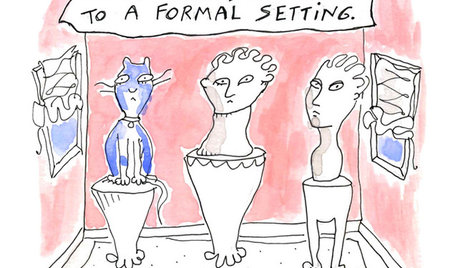Hello, Ive been lurking here about 6 months, this is my first post. Thank you all for letting me eavesdrop on your conversations. This is my plan and setup for composting, and IÂd really appreciate it if you would tell me your opinions.
I have a small property (5 acres) with 4 horses. It is divided (roughly) into a 3 acre pasture, a 1 acre riding arena / turnout area, and 1 acre for house, barn, garage/shop, and gardens.
I moved in two years ago, and built the barn and fences, the house and shop were here when I moved in. I have so far built two small (10Â x 10Â) square vegetable beds, and one large (4Â x 48Â) rose bed. There are small beds around the house. IÂve also built a small (4Âx6Â) raised strawberry bed, and this fall I am adding an 8Âx30Â lasagna-style vegetable bed.
I studied up on the manure removal issue when I was planning my property, and decided that the best choice would be to compost as much as possible, sending the rest to landfill (I know that landfill is a bad choice, but I simply donÂt have enough energy or spare time to handle ALL of the manure/bedding  I plan to gradually increase the amount IÂm keeping on the property and eliminate the landfill waste, but so far IÂm at about 2/3 composted, 1/3 hauled away) I have considered offering the excess on free cycle, but IÂm pretty far out of town and doubt anyone would want to come this far to pick some up.
Here is my plan - Behind the shop, I have 3 bins set up, 8Âdeep, 8Âwide, 4Âdeep, in a row sharing the back wall. I studied the plans from Texas A&M as well as MIZZOU and several others, but determined that if I followed their building plans, it would cost me nearly 800 dollars per bin, and I didnÂt have the $2500 laying around to spare. I read more and more, and finally settled on the following bins: T posts (Leftover from taking down the POÂs cattle fence) one on each corner, plus one in the middle of each wall. Wired with baling wire (Recovered from hay fed to the horses) I attached a 8Âx8Âx4Â section of white plastic trellis ($15 per section at Lowes) I used a landscape timber, screwed into the bottom of each section at each x, and wired to the posts, to stabilize the bottom to prevent it from pushing out.
I fill one bin completely, then move to the next bin, and then the next. Each bin will last me from 2 months (cold winter weather, horses mostly indoors) to 5 months (hot summer weather, couldnÂt PAY the horses to stay inside) to fill. So I have about 9 months worth of bin space, before all 3 are full. I donÂt own a tractor, but I do have a mini tiller. By the time bin 3 is full, bin 1 has reduced to about half full (they stay warm all through the winter, melting snow unless I get more than 6 inches of snow). I donÂt turn the bins biweekly like I see suggested often, because I donÂt have the time or energy to do so (I show the horses competitively so they get MOST of my time away from work). When the first bin has reduced to about half, most of the time the summer is here and I can just start breaking into it, I till the top layer, spreading it out, breaking up the top 6" layer, into a dark brown, appealing texture, occasionally a piece of hay is still identifiable, but not usually. I will shovel the tilled portion out, after it has dried a little to make it lighter, and spread it around any bedding plants as a mulch (but not around the vegetables).
I keep track of when I stop using each bin, so I know how old the freshest parts are. I stop adding to bin 1 by December 1, and that bin, when the weather is warm enough, I till under, and move to a "paranoia" curing area, across the yard, about 30 feet from my vegetable garden. I keep that pile sitting there all summer, adding water when it looks particularly dry, and will add garden waste (rotten tomatoes vines, carrot tops, etc) to that pile, but no more manure through the year. When my vegetable garden is done for that year, (usually September or October in this area) I will spread that pile onto the beds, to mellow, to be planted into the following may, so that before I plant into it, it has been curing for 17 months. I know a lot of people use manure much sooner, but IÂve read several studies on the persistence of E-Coil and several other nastiest, that say that many of them can survive a long time in manures, and just donÂt want to take the chance - does anyone think IÂm just crazy?
The rest of what is in the bins from the winter I will use as it appears ready, I till it under every few weeks, and see what the layer looks like, and when I canÂt identify hay easily, IÂll use it to mulch flower beds here and there, as well as under some trees (I have about 40 50Â pines around the front corner of the yard). I try to make sure all 3 bins behind the barn are as empty as possible by the first of November, as I know I wonÂt have much chance to really work with it once the hard freezes come on (IÂm allergic to cold air, hard to believe but true).
So, IÂm longwinded, but what do you think? Any extra advice? The horses are bedded in pelleted sawdust, and fed native prairie grasses. TheyÂre fairly picky eaters, so they get high quality hays, and refuse to eat seedy hay, laying it aside for me to get rid of, so thereÂs not much seed to deal with in any of my beds.
















Lloyd
blujen_gw Zone 6b Wichita KSOriginal Author
Related Professionals
Londonderry Landscape Architects & Landscape Designers · Eden Prairie Landscape Architects & Landscape Designers · Horsham Landscape Architects & Landscape Designers · Brookline Landscape Contractors · Choctaw Landscape Contractors · Huntley Landscape Contractors · Manhattan Landscape Contractors · Monterey Landscape Contractors · Soddy Daisy Landscape Contractors · The Villages Landscape Contractors · Waipahu Landscape Contractors · Shenandoah Landscape Contractors · Fort Worth Decks, Patios & Outdoor Enclosures · Miami Decks, Patios & Outdoor Enclosures · Salisbury Decks, Patios & Outdoor EnclosuresLloyd
bpgreen
blujen_gw Zone 6b Wichita KSOriginal Author
Lloyd
plantermunn
tclynx
blujen_gw Zone 6b Wichita KSOriginal Author
habitat_gardener